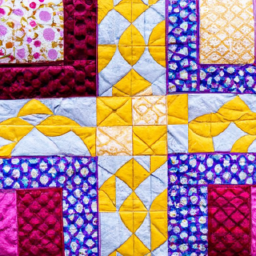
Barn quilts, also known as quilt patterns on barns, have become a beloved form of public art throughout the state of Wisconsin. These vibrant and eye-catching displays showcase the rich quilting heritage of the region while adding an extra splash of color to the rural landscapes.

The tradition of barn quilts can be traced back to the early 2000s when it gained popularity in Ohio. Since then, this unique art form has spread across the United States, with Wisconsin being at the forefront of the movement.
Origin and Meaning
Quilting holds a special place in the hearts of many Wisconsinites, with a strong quilting community deeply embedded in the state’s history. By painting quilt patterns on barns, locals pay homage to their heritage and showcase the craftsmanship and artistic skills involved in quilting.
Each barn quilt pattern has its own history and meaning. Some patterns have been passed down through families for generations, while others are inspired by traditional quilt designs. Each pattern tells a story, connecting the barn and its surroundings to the local community.

Community Involvement
The creation and maintenance of barn quilts often involve the entire community. Volunteers come together to design, paint, and install the quilt patterns on barns, fostering a sense of unity and pride. It is not uncommon for quilt trails to be created, guiding visitors through the countryside to admire these colorful works of art.
Furthermore, barn quilts have become a significant tourist attraction in Wisconsin. Visitors from all around the world come to marvel at these stunning displays of artistry and learn about the stories behind each unique pattern.

Preservation and Expansion
Efforts are being made to preserve and expand the barn quilt movement in Wisconsin. Organizations such as the Wisconsin Barn Quilt Project work towards cataloging and maintaining existing barn quilts, as well as encouraging new installations.
Many barn owners are open to having their barns adorned with these colorful quilt patterns, recognizing the cultural significance and economic benefits it brings. The presence of barn quilts has a positive impact on local communities, attracting tourism and fostering a sense of pride among residents.
Conclusion
The quilt patterns on barns in Wisconsin represent a unique intersection of art, history, and community involvement. They celebrate the state’s rich quilting heritage while brightening up the rural landscapes. Whether you are a quilting enthusiast or an art lover, exploring the barn quilt trails of Wisconsin is an experience not to be missed.